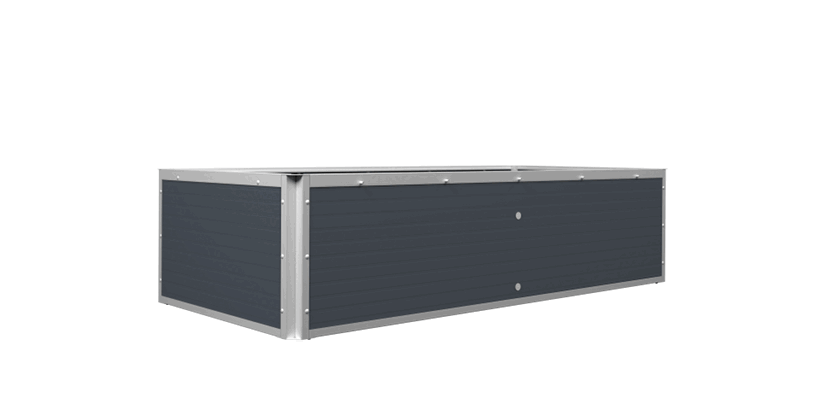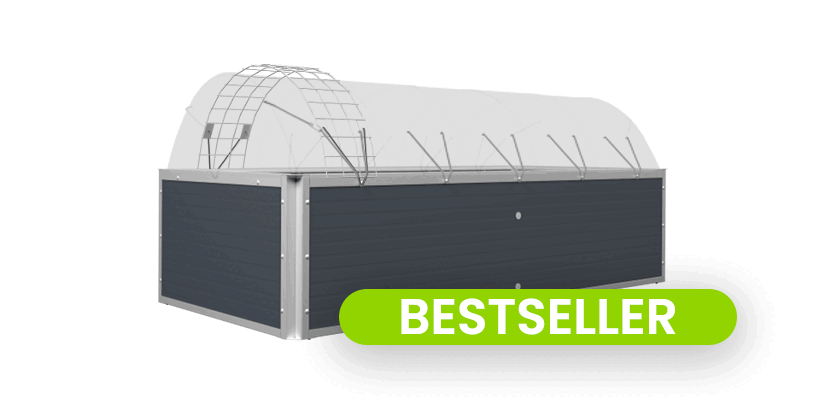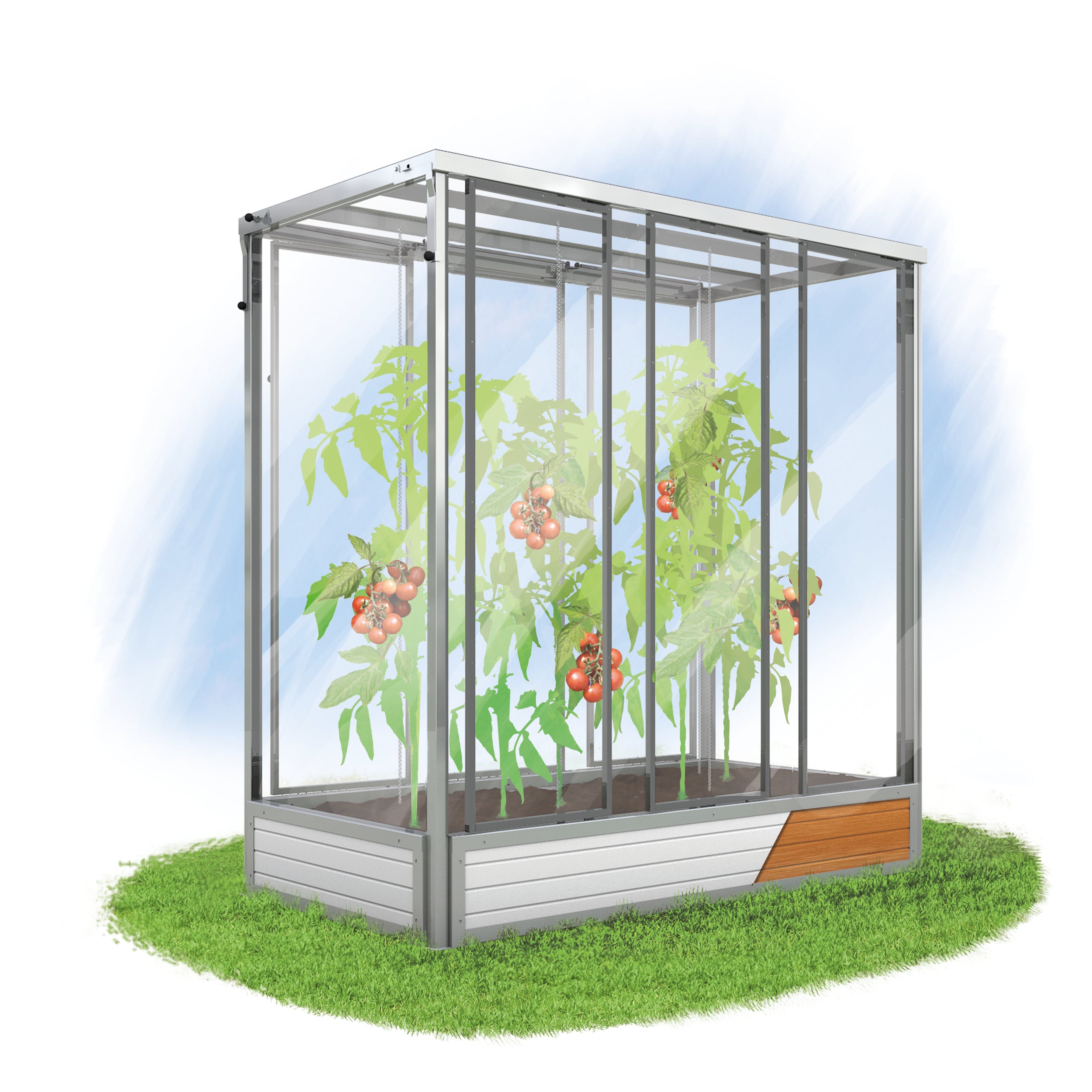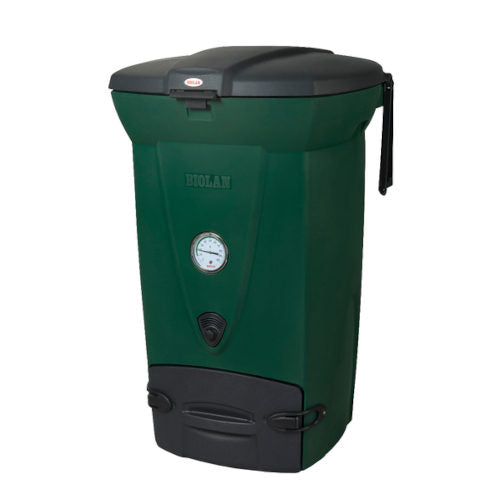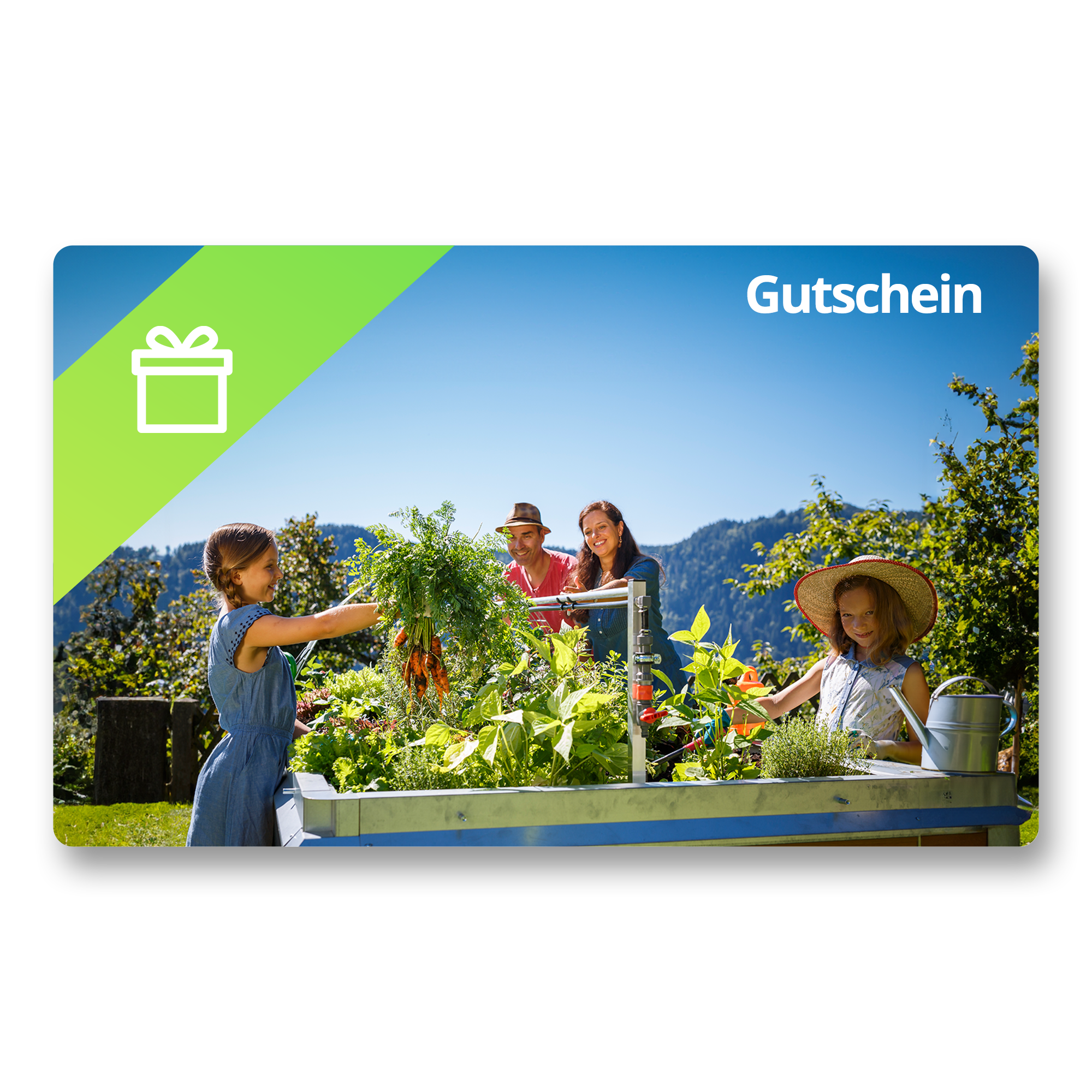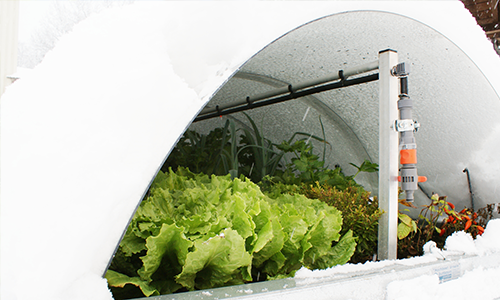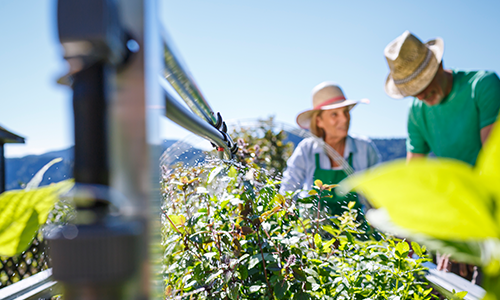Winter protection for plants in raised beds
The onset of winter is a very difficult time for raised beds, as winter brings its challenges. This season is characterized by cooler temperatures, more rainfall, and fewer hours of sunshine . All of this can greatly affect the health and growth of plants in raised beds. With increasing rainfall and intense weather events, the right strategy for raised bed care is necessary.
The colder temperatures can be a hindrance to some cold-sensitive plants. Some plants may be damaged or die, while others benefit from the cooler conditions and continue to grow. The Careful selection of plants is therefore a key element to ensure that the raised bed remains productive and strong even during the cold and rainy season. In addition, the variations in the hours of sunshine directly affect photosynthesis, the process by which plants produce energy. It is important to consider which plants can also live with fewer hours of sunshine and how to adapt irrigation to the new climatic conditions.
Strategies for protecting raised beds from the effects of bad weather conditions
At a time when climate change is contributing to an increase in extreme weather events, it is crucial to consider the impact of severe weather on raised beds in the fall and to take preventative measures. Extreme weather events such as heavy rain and storms can cause significant damage, including soil erosion, flooding and plant damage. Soil instability can compromise the structure of the raised bed and affect plant growth . In addition, sudden temperature changes which expose plants to thermal stress and negatively affect their development.
Adapting to climate change and bad weather requires a proactive approach and adaptation of gardening practices.
- The use of coverings , such as protective nets , can mitigate the effects of strong winds and protect plants from hail .
- Erecting temporary shelters, such as tarpaulins or greenhouses , provides an additional layer of protection against inclement weather conditions and provides a better environment for the plants.
- In addition, improving drainage and irrigation systems becomes even more important, as well-drained soil is less susceptible to damage from heavy rain and flooding.
selection of suitable plants
When designing and maintaining raised beds in winter and bad weather, the right choice of plants a crucial role in the growth and maintenance of the plants. Choosing the right plants that thrive even in bad weather can make all the difference in keeping the raised bed alive even in unfavorable conditions.
- Deep-rooted plants and robust structure:
Plants with deep roots and a robust structure can better withstand the effects of bad weather. Varieties such as peonies, roses and viburnum bushes can stabilize the raised bed and prevent soil erosion caused by heavy rain or strong wind. These plants form a solid base that stability of the environment and to maintain ideal conditions for growth the surrounding plants
- Weather-resistant perennials:
Perennial plants show remarkable resilience to climatic fluctuations and adverse weather conditions. Species such as Lavender, chives and echinacea can survive cooler temperatures and periods of high humidity. Their adaptability to changing seasonal conditions makes them a valuable choice when it comes to maintaining the vitality of the raised bed in the fall and beyond.
- Native plants and their resistance to bad weather:
Native plants have evolved in harmony with the climatic and ecological conditions of their region. They are naturally adapted to local challenges, including seasonal changes and poor weather conditions. Opting for native plants therefore offers an advantage in combating the negative effects of climate. If you live in an area subject to heavy rainfall or high humidity, consider native wetland plants that have evolved to cope with these special conditions.
- Succulent plants for weather resistance
Succulent plants are characterized by their Ability to collect water in the leaves , adapted to survive in drought and can also cope with unpredictable weather conditions. This property makes them ideal for raised beds exposed to the bad autumn weather. Planting with different types of succulents not only increases resilience the environment, but also gives it a unique touch of beauty and diversity .
Advantages of a metal raised bed in bad weather
In the changing and often unpredictable cold season, in which bad weather conditions prevail, the choice of materials for the raised bed plays a crucial role in creating a robust and resilient garden. Among the available options, a raised bed made of metal as a smart and advantageous choice to decisively address climate challenges.
- Durability and stability:
A key benefit of choosing a metal raised bed is its durability and stability . This resilience means that they can withstand heavy rain, strong winds and even hail, protecting the plants inside well.
- Protective shield against adverse weather conditions:
The metal structure of the bed provides a reliable physical barrier against bad weather conditions . Setting up a metal bed provides a protective shield against storms and hail and protects the plants from harmful influences. This advantage results in protected plants and a stable environment that promotes optimal growth.
- Lower water intake and risk reduction:
One of the strengths of metal raised beds is that they do not absorb water, which Risk of rotting is significantly reduced . This is especially important during prolonged or stormy rain when the soil can become saturated with water. The metal raised bed protects the soil and plant roots and promotes healthy and strong growth.
- Resistance to chemicals and lower maintenance requirements:
In contrast to organic materials such as wood, metal less susceptible to damage by insects, pests or fungi . This resistance helps to maintain the integrity of the plants and the structure of the bed over time. In addition, a metal bed generally requires less maintenance as it is less susceptible to discoloration, deformation or decay .
- Flexible design and individual design:
Using metal for a raised bed offers more flexibility in design and customization . Its malleability allows for custom shapes and sizes to suit the specific needs of the plants or the available space. This aspect makes it possible to develop an aesthetically pleasing and functional raised bed garden.
What are you waiting for, follow the valuable advice from our blog , build your personalized raised bed and make it strong and resistant.
